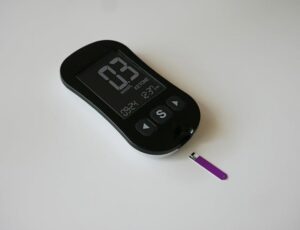Embarking on a fitness journey as a beginner can feel overwhelming, with a multitude of exercise options, conflicting information, and unfamiliar terminology. However, starting a fitness routine doesn’t have to be daunting. With the right approach and mindset, anyone can begin their journey toward improved health and fitness. Here’s a beginner’s guide to help you get started on the path to a fitter, healthier you:
- Set Realistic Goals: Begin by setting specific, achievable goals that reflect your fitness aspirations. Whether you aim to lose weight, build muscle, improve endurance, or enhance overall health, having clear objectives will provide direction and motivation for your fitness journey.
- Start Slowly: Avoid the temptation to jump into intense workouts right away. Begin with low-impact exercises and gradually increase the intensity and duration as your fitness level improves. Starting slowly reduces the risk of injury and prevents burnout, allowing you to build a strong foundation for long-term success.
- Choose Activities You Enjoy: Explore different types of physical activities and choose ones that you genuinely enjoy. Whether it’s walking, swimming, cycling, dancing, or group fitness classes, finding activities that you look forward to will make exercise more enjoyable and sustainable.
- Focus on Form and Technique: Pay attention to proper form and technique when performing exercises to prevent injury and maximize effectiveness. If you’re unsure about how to perform a particular exercise correctly, seek guidance from a qualified fitness professional or use reputable online resources.
- Incorporate Strength Training: Strength training is an essential component of any fitness routine, regardless of your goals. Incorporate exercises that target major muscle groups, such as squats, lunges, push-ups, and rows, using bodyweight, resistance bands, or free weights.
- Prioritize Cardiovascular Exercise: Cardiovascular exercise, also known as aerobic exercise, helps improve heart health, endurance, and calorie burn. Incorporate activities such as brisk walking, jogging, cycling, swimming, or dancing into your routine to elevate your heart rate and improve cardiovascular fitness.
- Stay Consistent: Consistency is key to seeing progress and reaping the benefits of exercise. Commit to a regular workout schedule that fits your lifestyle and stick to it, even on days when motivation is lacking. Consistent effort over time yields significant results.
- Listen to Your Body: Pay attention to your body’s signals and adjust your workouts accordingly. If you experience pain, discomfort, or excessive fatigue during exercise, take a break or modify the intensity or duration of your workout. Push yourself, but also know when to rest and recover.
- Fuel Your Body Properly: Support your workouts with proper nutrition and hydration. Consume a balanced diet rich in fruits, vegetables, lean proteins, whole grains, and healthy fats to provide the energy and nutrients your body needs for exercise and recovery. Drink plenty of water to stay hydrated before, during, and after workouts.
- Celebrate Progress: Celebrate your achievements and progress along the way, no matter how small. Whether it’s completing a challenging workout, reaching a fitness milestone, or noticing improvements in strength or endurance, acknowledge your accomplishments and use them as motivation to keep pushing forward.
Remember that fitness is a journey, and progress takes time. Be patient with yourself, stay committed to your goals, and embrace the process of self-improvement. With consistency, dedication, and a positive attitude, you can achieve your fitness goals and enjoy the numerous benefits of an active and healthy lifestyle.




